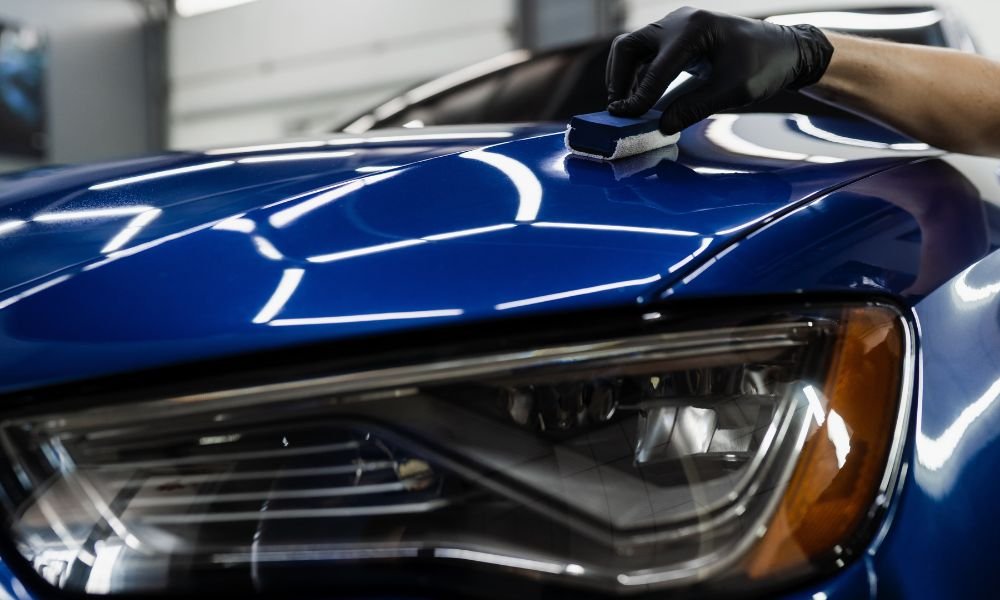A Comprehensive Guide to the Sorts Of Ceramic Layer on the Market
Ceramic finishes have become a pivotal option across different industries as a result of their special properties and applications. From silica-based formulas known for their robustness to crossbreed choices that combine several benefits, the selections readily available can be frustrating. Comprehending the nuances of each type, including their particular benefits and suitable use cases, is necessary for making informed choices. As we discover the unique qualities and applications of these layers, the effects for performance and durability come to be progressively evident, increasing inquiries regarding which kind might best fit your demands.
Comprehending Ceramic Coatings
Ceramic layers are innovative safety options that have actually gotten appeal in different markets, especially in auto and aerospace applications. These coverings include a liquid polymer that, when treated, creates a resilient, hydrophobic layer on the surface area of the substrate. This layer gives boosted resistance to ecological pollutants, UV radiation, and chemical exposure, therefore expanding the life and visual appeal of the underlying material.
The fundamental element of ceramic layers is silica, which adds to their hardness and sturdiness. The application procedure usually includes surface area prep work, application of the finish, and curing, which can be attained with warm or UV light. Once treated, ceramic finishes display extraordinary bonding properties, permitting them to adhere highly to a variety of surface areas, including metals, plastics, and glass.
Along with their safety functions, ceramic finishes additionally use convenience of upkeep. Their hydrophobic nature reduces the adherence of dirt and grime, making cleaning less complex and less frequent. On the whole, the fostering of ceramic coatings represents a significant innovation in surface defense modern technology, giving both functional and visual benefits across multiple markets.
Sorts Of Ceramic Coatings
Different kinds of ceramic coverings are readily available, each designed to satisfy details performance demands and applications - Paint Protection Film. The most typical kinds consist of:
Silica-based Coatings: These coverings mostly consist of silicon dioxide and are understood for their longevity and chemical resistance. They are extensively used in auto and industrial applications.
Titanium Dioxide Coatings: Prominent for their photocatalytic buildings, titanium dioxide finishes are usually applied in environments where self-cleaning and antifungal buildings are desirable, such as in structure products and automobile surfaces.
Zirconia Coatings: Characterized by their high-temperature security and thermal resistance, zirconia coatings are utilized in applications such as turbine engines and high-performance auto parts.
Alumina Coatings: Showing superb firmness and thermal security, alumina finishings are regularly utilized in wear-resistant applications, including cutting tools and industrial equipment. - Car Detailing
Hybrid Coatings: Integrating the buildings of numerous materials, hybrid layers use enhanced efficiency qualities, making them suitable for one-of-a-kind and requiring applications.
Each sort of ceramic finishing serves distinctive purposes, enabling users to choose the most proper service based upon particular ecological conditions and performance needs.
Advantages of Ceramic Coatings
Ceramic coverings, in certain, deal numerous advantages that make them significantly preferred amongst makers and consumers alike. These finishings are immune to scrapes, chemicals, and UV rays, ensuring that the underlying surface area continues to be protected over time.
Along with durability, ceramic finishings give superb hydrophobic buildings, enabling easy cleaning and maintenance. This water-repellent nature minimizes the adherence of dirt, gunk, and other impurities, which can prolong the aesthetic charm and capability of the surface. Ceramic layers can dramatically improve thermal resistance, making them optimal for Learn More Here applications that sustain high temperature levels.

Application Process
When using ceramic layers, a meticulous approach is vital to accomplish ideal outcomes. The application procedure usually begins with detailed surface prep work. This involves cleaning, sanitizing, and brightening the surface to get rid of all impurities, including dirt, grease, and prior waxes or sealants. A clean surface ensures correct attachment of the covering.
Once the surface is prepped, the next action is to apply the ceramic layer. The layer needs to be used in thin layers, as thicker applications can lead to uneven surfaces.
After application, the coating calls for a certain treating time, generally ranging from a few hours to a complete day, depending on the product. Complying with these actions vigilantly will optimize the performance and longevity of the ceramic finish, providing a resilient protective layer for the surface.
Upkeep and Durability
To guarantee the long life and efficiency of a ceramic coating, normal maintenance is crucial. Ceramic finishes, known for their resilience and safety top qualities, require specific care routines to maximize their life expectancy and efficiency. The first step in upkeep entails routine cleaning with pH-neutral soap, preventing extreme chemicals that can break down the layer. It is recommended to clean the car routinely, preferably every 2 weeks, to stop the buildup of contaminants that can compromise the finish's integrity.
Along with regular cleaning, regular assessments are critical. Try to find signs of wear or damage, such as hydrophobic residential properties diminishing or surface area imperfections. If required, a light polish may be related to invigorate the layer without removing it away.
Additionally, the application of a booster spray can page improve the finish's hydrophobic results read this and recover its gloss. This is specifically beneficial for finishings that have actually remained in usage for an extensive duration. Ultimately, by adhering to these maintenance methods, one can significantly extend the life of a ceramic finishing, making certain that it continues to offer optimal protection versus ecological aspects and preserve the aesthetic appeal of the automobile.
Verdict
